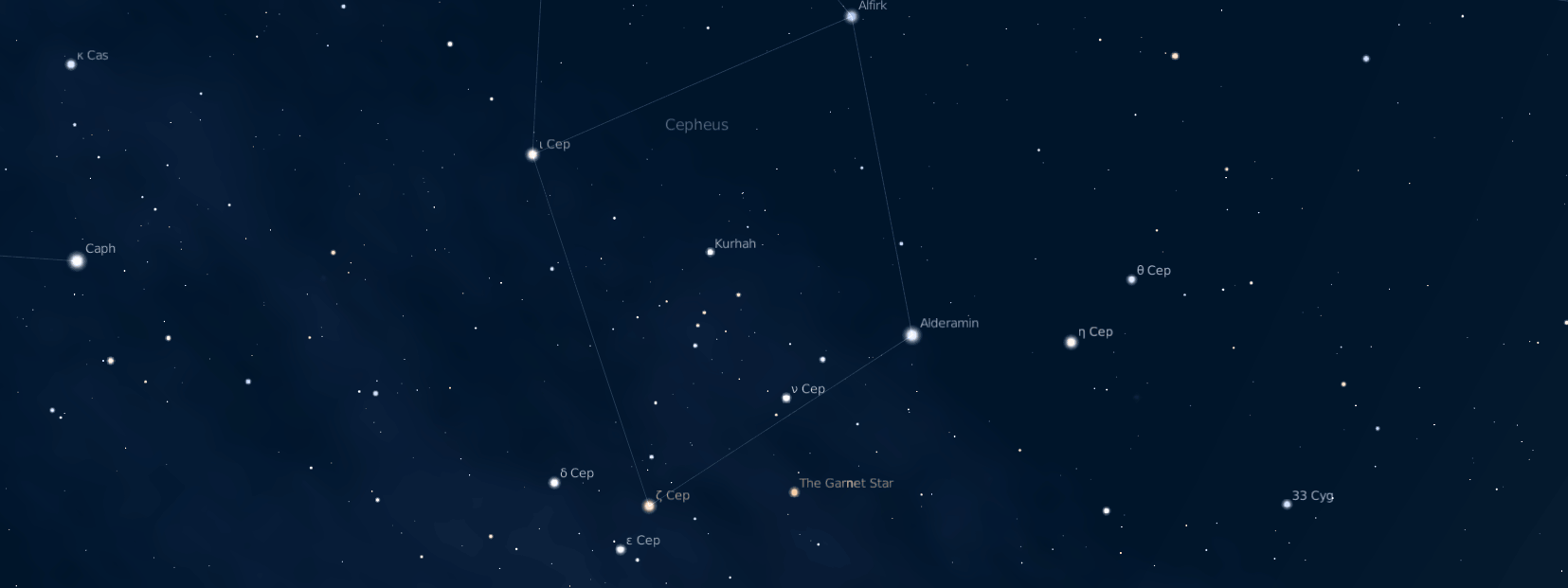
Delta (δ) and Mu (μ) Cephei
October 2010 :
In the southern part of Cepheus is a pair of naked eye variable stars worthy of note. The first, delta (?), is the prototypical Cepheid variable. It ranges between magnitudes 3.5 and 4.4 in a precise 5.37 day period. The rise from minimum to maximum brightness takes about 1½ days; the fade back to minimum involves an additional four.
Its short period and one-magnitude amplitude make delta Cephei an ideal variable star for the novice. Even better, delta Cep is part of a triangle formed by zeta (?) and epsilon (?). Their respective magnitudes of 3.6 and 4.2 closely match delta’s maximum and minimum brightness, making them convenient markers for magnitude estimates. A week of nightly observations (weather permitting) will allow you to follow delta Cep through a complete cycle.
A telescope isn’t needed to follow delta’s variations, but it will reveal a 7th magnitude companion 41 arc-seconds away. Pale yellow and blue, they make a nice low-power sight.
About 6 degrees east of delta Cep is mu (?) Cephei. Its ruddy hue was first noticed by William Herschel, and the star is now known as Herschel’s “Garnet Star.” The name is misleading, because mu Cep appears more of a Betelgeuse-like yellow-orange when viewed with binoculars or telescope. Just as the ruddy hue of Betelgeuse seems more striking when compared to the pure-white star Rigel, so is mu Cep’s color more evident when compared with alpha (?) Cephei. Like Betelgeuse, mu Cep is a red supergiant undergoing the death throes of a massive, aging star. Betelgeuse may be celebrated as one of the larger stars in our galactic neighborhood, but it pales in comparison to mu Cep. Approximately two to three times the diameter of Betelgeuse, mu Cep would engulf the entire solar system out to beyond Saturn’s orbit were it put in place of our sun!
Unlike delta, mu Cep has an irregular cycle. Varying between magnitudes 3.4 and 5.1, mu Cep undergoes a complex set of superimposed cycles between 700 and 4500 days. Right now, it shines at about magnitude 4.0 – easily seen with the unaided eye. Unlike the nightly observations required to follow delta Cephei, a monthly sighting of mu Cephei will suffice.
Your comments on this column are welcome. E-mail me at gchaple@hotmail.com.



